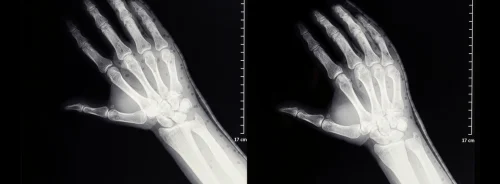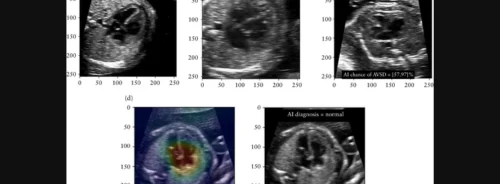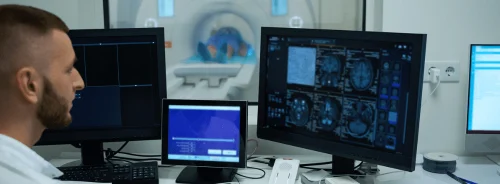HealthManagement, Volume 6 - Issue 5, 2006
Largest Single Imaging Market in Europe
Author
Dr Hans-Peter Bursig
Managing Director
ZVEI Divison Medical
Engineering
Frankfurt Am Main, Germany
Germany is probably unique in that it maintains two separate systems for providing medical imaging services. Although radiologists and other medical specialists using medical imaging technologies operate both in hospitals as well as in outpatient facilities, both offices are subject to two different reimbursement systems. In addition, some medical imaging technologies may be used by non-radiologic specialists in Germany, for example, the use of diagnostic ultrasound by a wide range of medical specialist professions. From the point of view of providers of medical imaging equipment, this means that they have to adjust to different groups of customers as well as different economic conditions.
Imaging Hit by Cost Control
In the past five years, the German market for medical imaging equipment has been basically stagnant, due to a number of cost containment measures in the Statutory Health Insurance system, known by its German abbreviation “GKV”. Through a number of measures, reimbursement for all medical procedures, including medical imaging, has been controlled. At the same time, Germany introduced a DRG-based reimbursement system in its hospitals. These influences and changes have in the past years greatly reduced the ability to invest in medical imaging technologies.
Lower Demand for Mid-range Equipment
The German market for medical imaging equipment (excluding IT systems like RIS and PACS) has an average yearly value of around 725m Euro. At the top end of the market, modern equipment has replaced previous generations, thus improving the quality and efficiency of imaging services provided. At the lower end of the market, modern production methods introduced by the industry have helped to make economic versions of imaging equipment widely available. Such systems tend to provide only a limited set of features compared to the most advanced systems. Depending on reimbursement details in Germany, there is a slight pull for high end quality as well as for low end prices at the same time. Customers have increasingly revised their procurement practices to reflect this new economic environment. Increasingly, funds available for investment are distributed between high- and low-range pieces of equipment, reducing the market potential for mid-range equipment. The following paragraphs look at several segments of the market.
Market Segments
MRI and CT, the current procedures of choice for most clinical situations, enjoy relatively favourable market conditions, although they are subject to the general trends described above. Multi-slice CT as well as high-field MRI systems have encouraged replacement decisions in order to keep track of technological as well as medical developments.
Trend of Digitisation in Imaging
In Germany, x-ray as well as angiography modalities are open to use from non-radiologist medical specialists. However, this is under the condition that the individuals in question have acquired the necessary qualifications and the use of these imaging technologies falls within the scope of their specialty. Examples are cardiologists as well as orthopaedic specialists, who both make use of medical imaging in questions specific to their specialty. While the demand for angiography has benefited from advances in interventional radiology, the demand for x-ray equipment has been declining. This is mainly due to the economic situation of non-radiologic users of such equipment.
Nevertheless, the introduction of digital x-ray technologies (both CR and DR) has led to the replacement of conventional systems. This is especially the case in settings where most of the equipment used is already digital and feeding information into a departmental information system and a PACS. A specific situation also exists in the area of mammography. Germany is in the process of establishing a national mammography screening programme. The requirements for this programme may lead to the replacement of a certain number of existing pieces of equipment.
Some Technologies Still Lack Attention
The market for nuclear medicine is subject to particular conditions, since conventional nuclear medicine has been restricted to specific procedures and cases due to advances in other imaging technologies. On the other hand, PET is providing a powerful imaging technology, whose full potential is not yet fully understood. The development of hybrid systems (e.g. PET/CT) is further enlarging the scope for PET. The market is, nevertheless, held back by the fact that PET has not yet received approval for reimbursement from “GKV”, if performed outside hospitals. In total, the market for conventional nuclear medicine systems has been stable, while limited growth has been achieved in the market for PET systems.
High Quality of Equipment and Education
The market for diagnostic ultrasound shows the most diverse picture. Used by most medical specialists, ultrasound is the most widely-used technology in Germany. This has led to the development of a large number of specific applications and technologies being available. Despite that degree of specialisation, the market has to a very high degree been subject to the general trends described above. The number of pieces of equipment sold has increased, while the total value of the market has remained stable. At the same time, the German Society for Ultrasound in Medicine (DEGUM) is concerned about the education of users of ultrasound in Germany and is proposing stronger criteria for training. Another concern of DEGUM is that a considerable number of pieces of equipment may be too old and are not in a proper state of maintenance.
Improvements in Workflow
Of specific note is the market for IT systems in radiology, particularly Radiology Information Systems (RIS) and Picture Archiving and Communication Systems (PACS). This market in Germany is worth approximately 100m Euro per year, although the award of large-scale projects may distort the picture in individual years. The need to improve efficiency and maintain diagnostic quality requires customers to analyse processes within their departments and improve workflow. As a consequence, customers increasingly aim to integrate and upgrade existing IT systems. In this context, German customers are putting considerable emphasis on the use of reliable standards and open, practice-oriented interoperability requirements. For example, most calls for tender name compliance with DICOM and certain DICOM services as compulsory. In order to promote the interoperability of IT solutions across technical borders and different providers, the German X-ray Society and ZVEI jointly support the Integrating the Health Care Enterprise (IHE) initiative in Germany. This initiative has found strong interest among radiologists in Germany and is now being applied in other medical domains with considerable success.
Germany Remains an Attractive Imaging
Market
The German market is the single largest market within Europe and capable of absorbing innovative medical imaging technologies. At the same time, the high number of qualified users provides a powerful platform for the further development of medical imaging technologies. However, ZVEI estimates the investment backlog in Germany from previous years to be between 5 to 7 billion Euro for medical imaging equipment alone. Based on this, there is considerable need for the modernisation of the existing infrastructure.
The climate for investment began to improve in 2005. There are indications that the adjustment to the new economic and organisational conditions for medical imaging has been largely completed. Customers are now increasingly looking at investment in medical technologies as a way to further improve the quality and efficiency of their departments. From a business perspective and despite its complex nature, the German market for medical imaging equipment therefore remains highly attractive.





